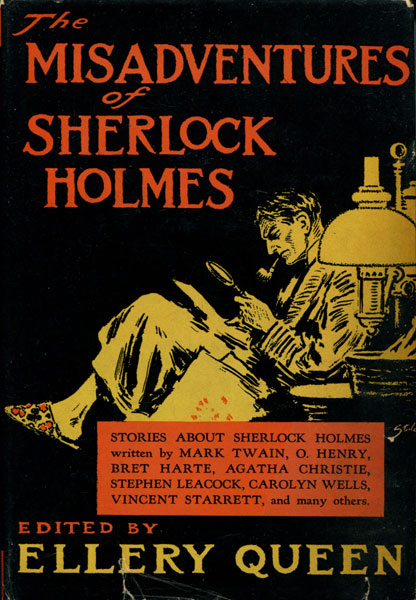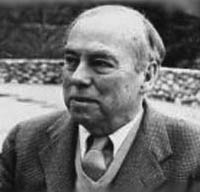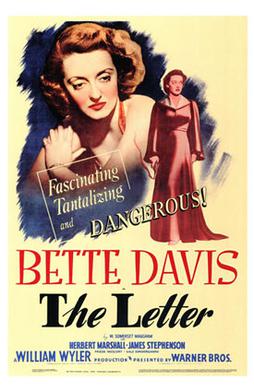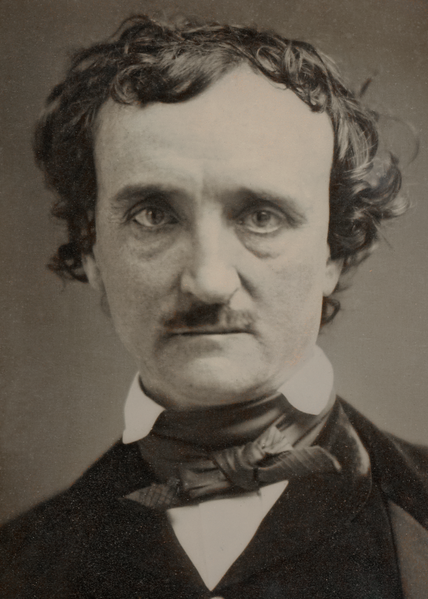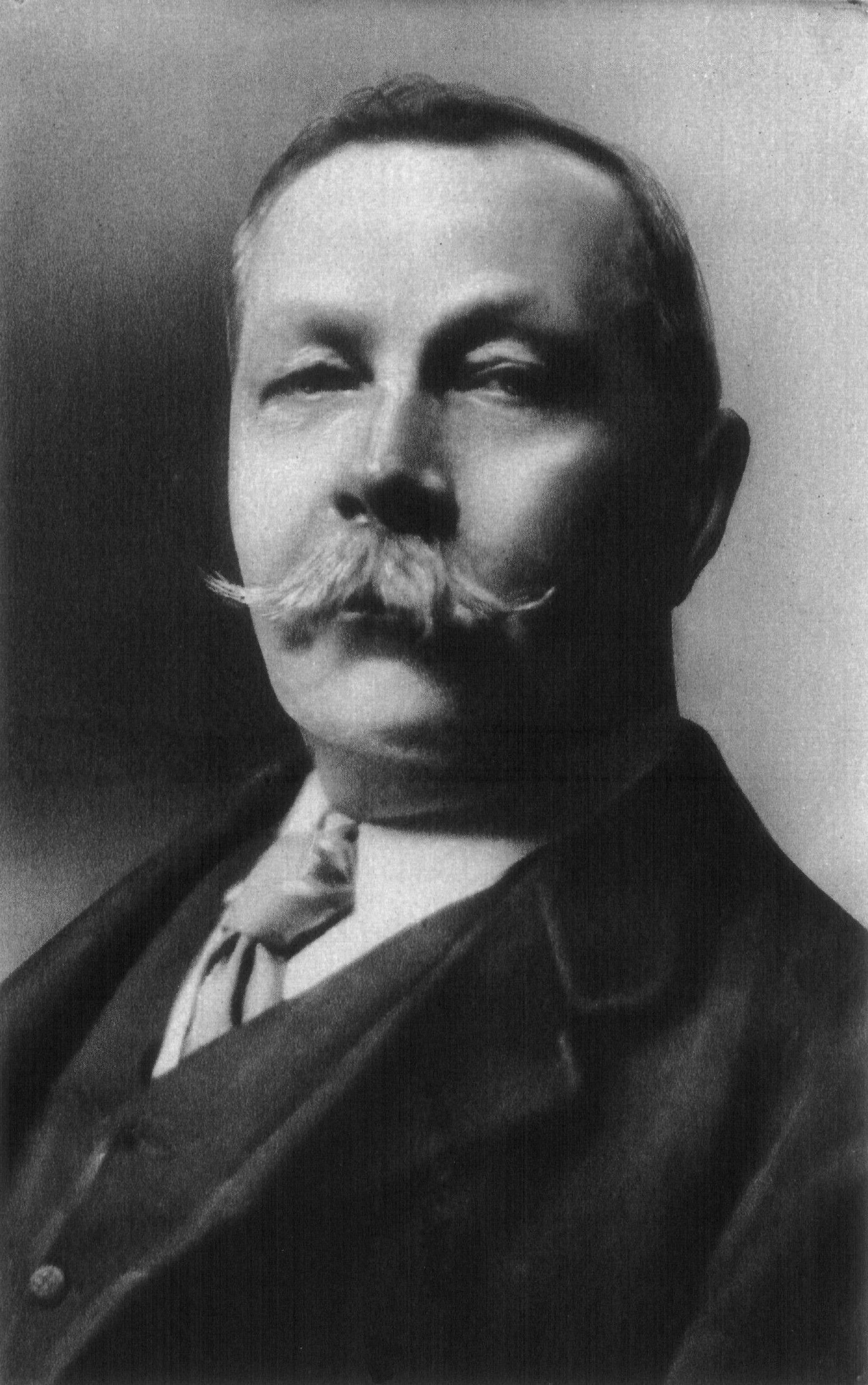You might not recognize the name William Sydney Porter (spelled Sidney on his birth record) because he’s much more famous under his pen name, O Henry.
The author is known for his contemporary humor and twist endings. He wrote at least two Sherlock Holmes parodies featuring the characters Shamrock Jolnes and Dr. Whatsup. Not O Henry’s best works, the stories contain tepid joke endings. A number of jests and witticisms of the time can be found in this story, such as a comment on the price of gas for heating in New York City where O Henry’s characters reside.
We see here another example of British spellings still in use, much as we found in the works of Horatio Alger, Jr in post-Civil War America. Here the publish date is 1911, the eve of World War I, a year after O Henry's death.
After reading this, you’ll probably head to the bar for a stiff one, muttering, “Oh, man. O Henry gets this trash published and I can’t get an editor to look at my Sherlock in Love opus?”
You’ve been warned.
The Adventures of Shamrock Jolnes
by O Henry
(© 1911)
I am so fortunate as to count Shamrock Jolnes, the great New York detective, among my muster of friends. Jolnes is what is called the “inside man” of the city detective force. He is an expert in the use of the typewriter, and it is his duty, whenever there is a “murder mystery” to be solved, to sit at a desk telephone at headquarters and take down the messages of “cranks” who ’phone in their confessions to having committed the crime.But on certain “off” days when confessions are coming in slowly and three or four newspapers have run to earth as many different guilty persons, Jolnes will knock about the town with me, exhibiting, to my great delight and instruction, his marvellous powers of observation and deduction.The other day I dropped in at Headquarters and found the great detective gazing thoughtfully at a string that was tied tightly around his little finger.“Good morning, Whatsup,” he said, without turning his head. “I’m glad to notice that you’ve had your house fitted up with electric lights at last.”“Will you please tell me,” I said, in surprise, “how you knew that? I am sure that I never mentioned the fact to any one, and the wiring was a rush order not completed until this morning.”“Nothing easier,” said Jolnes, genially. “As you came in I caught the odour of the cigar you are smoking. I know an expensive cigar; and I know that not more than three men in New York can afford to smoke cigars and pay gas bills too at the present time. That was an easy one. But I am working just now on a little problem of my own.”“Why have you that string on your finger?” I asked.“That’s the problem,” said Jolnes. “My wife tied that on this morning to remind me of something I was to send up to the house. Sit down, Whatsup, and excuse me for a few moments.”The distinguished detective went to a wall telephone, and stood with the receiver to his ear for probably ten minutes.“Were you listening to a confession?” I asked, when he had returned to his chair.“Perhaps,” said Jolnes, with a smile, “it might be called something of the sort. To be frank with you, Whatsup, I’ve cut out the dope. I’ve been increasing the quantity for so long that morphine doesn’t have much effect on me any more. I’ve got to have something more powerful. That telephone I just went to is connected with a room in the Waldorf where there’s an author’s reading in progress. Now, to get at the solution of this string.”After five minutes of silent pondering, Jolnes looked at me, with a smile, and nodded his head.“Wonderful man!” I exclaimed; “already?”“It is quite simple,” he said, holding up his finger. “You see that knot? That is to prevent my forgetting. It is, therefore, a forget-me-knot. A forget-me-not is a flower. It was a sack of flour that I was to send home!”“Beautiful!” I could not help crying out in admiration.“Suppose we go out for a ramble,” suggested Jolnes.“There is only one case of importance on hand just now. Old man McCarty, one hundred and four years old, died from eating too many bananas. The evidence points so strongly to the Mafia that the police have surrounded the Second Avenue Katzenjammer Gambrinus Club No. 2, and the capture of the assassin is only the matter of a few hours. The detective force has not yet been called on for assistance.”Jolnes and I went out and up the street toward the corner, where we were to catch a surface car.Half-way up the block we met Rheingelder, an acquaintance of ours, who held a City Hall position.“Good morning, Rheingelder,” said Jolnes, halting.“Nice breakfast that was you had this morning.” Always on the lookout for the detective’s remarkable feats of deduction, I saw Jolnes’s eye flash for an instant upon a long yellow splash on the shirt bosom and a smaller one upon the chin of Rheingelder -- both undoubtedly made by the yolk of an egg.“Oh, dot is some of your detectiveness,” said Rheingelder, shaking all over with a smile. “Vell, I pet you trinks und cigars all round dot you cannot tell vot I haf eaten for breakfast.”“Done,” said Jolnes. “Sausage, pumpernickel and coffee.”Rheingelder admitted the correctness of the surmise and paid the bet. When we had proceeded on our way I said to Jolnes:“I thought you looked at the egg spilled on his chin and shirt front.”“I did,” said Jolnes. “That is where I began my deduction. Rheingelder is a very economical, saving man. Yesterday eggs dropped in the market to twenty-eight cents per dozen. To-day they are quoted at forty-two. Rheingelder ate eggs yesterday, and to-day he went back to his usual fare. A little thing like this isn’t anything, Whatsup; it belongs to the primary arithmetic class.”When we boarded the street car we found the seats all occupied -- principally by ladies. Jolnes and I stood on the rear platform.About the middle of the car there sat an elderly man with a short, gray beard, who looked to be the typical, well-dressed New Yorker. At successive corners other ladies climbed aboard, and soon three or four of them were standing over the man, clinging to straps and glaring meaningly at the man who occupied the coveted seat. But he resolutely retained his place.“We New Yorkers,” I remarked to Jolnes, “have about lost our manners, as far as the exercise of them in public goes.”“Perhaps so,” said Jolnes, lightly; “but the man you evidently refer to happens to be a very chivalrous and courteous gentleman from Old Virginia. He is spending a few days in New York with his wife and two daughters, and he leaves for the South to-night.”“You know him, then?” I said, in amazement.“I never saw him before we stepped on the car,” declared the detective, smilingly.“By the gold tooth of the Witch of Endor!” I cried, “if you can construe all that from his appearance you are dealing in nothing else than black art.”“The habit of observation -- nothing more,” said Jolnes. “If the old gentleman gets off the car before we do, I think I can demonstrate to you the accuracy of my deduction.”Three blocks farther along the gentleman rose to leave the car. Jolnes addressed him at the door: “Pardon me, sir, but are you not Colonel Hunter, of Norfolk, Virginia?”“No, suh,” was the extremely courteous answer. “My name, suh, is Ellison -- Major Winfield R. Ellison, from Fairfax County, in the same state. I know a good many people, suh, in Norfolk -- the Goodriches, the Tollivers, and the Crabtrees, suh, but I never had the pleasure of meeting yo’ friend, Colonel Hunter. I am happy to say, suh, that I am going back to Virginia to-night, after having spent a week in yo’ city with my wife and three daughters. I shall be in Norfolk in about ten days, and if you will give me yo’ name, suh, I will take pleasure in looking up Colonel Hunter and telling him that you inquired after him, suh.”“Thank you,” said Jolnes; “tell him that Reynolds sent his regards, if you will be so kind.”I glanced at the great New York detective and saw that a look of intense chagrin had come upon his clear-cut features. Failure in the slightest point always galled Shamrock Jolnes.“Did you say your _three_ daughters?” he asked of the Virginia gentleman.“Yes, suh, my three daughters, all as fine girls as there are in Fairfax County,” was the answer.With that Major Ellison stopped the car and began to descend the step.Shamrock Jolnes clutched his arm.“One moment, sir,” he begged, in an urbane voice in which I alone detected the anxiety -- “am I not right in believing that one of the young ladies is an _adopted_ daughter?”“You are, suh,” admitted the major, from the ground, “but how the devil you knew it, suh, is mo’ than I can tell.”“And mo’ than I can tell, too,” I said, as the car went on.Jolnes was restored to his calm, observant serenity by having wrested victory from his apparent failure; so after we got off the car he invited me into a cafe, promising to reveal the process of his latest wonderful feat.“In the first place,” he began after we were comfortably seated, “I knew the gentleman was no New Yorker because he was flushed and uneasy and restless on account of the ladies that were standing, although he did not rise and give them his seat. I decided from his appearance that he was a Southerner rather than a Westerner.“Next I began to figure out his reason for not relinquishing his seat to a lady when he evidently felt strongly, but not overpoweringly, impelled to do so. I very quickly decided upon that. I noticed that one of his eyes had received a severe jab in one corner, which was red and inflamed, and that all over his face were tiny round marks about the size of the end of an uncut lead pencil. Also upon both of his patent leather shoes were a number of deep imprints shaped like ovals cut off square at one end.“Now, there is only one district in New York City where a man is bound to receive scars and wounds and indentations of that sort -- and that is along the sidewalks of Twenty-third Street and a portion of Sixth Avenue south of there. I knew from the imprints of trampling French heels on his feet and the marks of countless jabs in the face from umbrellas and parasols carried by women in the shopping district that he had been in conflict with the amazonian troops. And as he was a man of intelligent appearance, I knew he would not have braved such dangers unless he had been dragged thither by his own women folk. Therefore, when he got on the car his anger at the treatment he had received was sufficient to make him keep his seat in spite of his traditions of Southern chivalry.”“That is all very well,” I said, “but why did you insist upon daughters -- and especially two daughters? Why couldn’t a wife alone have taken him shopping?”“There had to be daughters,” said Jolnes, calmly. “If he had only a wife, and she near his own age, he could have bluffed her into going alone. If he had a young wife she would prefer to go alone. So there you are.”“I’ll admit that,” I said; “but, now, why two daughters? And how, in the name of all the prophets, did you guess that one was adopted when he told you he had three?”“Don’t say guess,” said Jolnes, with a touch of pride in his air; “there is no such word in the lexicon of ratiocination. In Major Ellison’s buttonhole there was a carnation and a rosebud backed by a geranium leaf. No woman ever combined a carnation and a rosebud into a boutonniere. Close your eyes, Whatsup, and give the logic of your imagination a chance. Cannot you see the lovely Adele fastening the carnation to the lapel so that papa may be gay upon the street? And then the romping Edith May dancing up with sisterly jealousy to add her rosebud to the adornment?”“And then,” I cried, beginning to feel enthusiasm, “when he declared that he had three daughters” --“I could see,” said Jolnes, “one in the background who added no flower; and I knew that she must be --”“Adopted!” I broke in. “I give you every credit; but how did you know he was leaving for the South to-night?”“In his breast pocket,” said the great detective, “something large and oval made a protuberance. Good liquor is scarce on trains, and it is a long journey from New York to Fairfax County.”“Again, I must bow to you,” I said. “And tell me this, so that my last shred of doubt will be cleared away; why did you decide that he was from Virginia?”“It was very faint, I admit,” answered Shamrock Jolnes, “but no trained observer could have failed to detect the odour of mint in the car.”
Coming next week, another painful classic.


